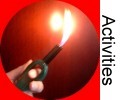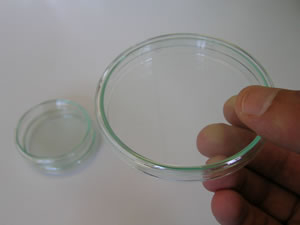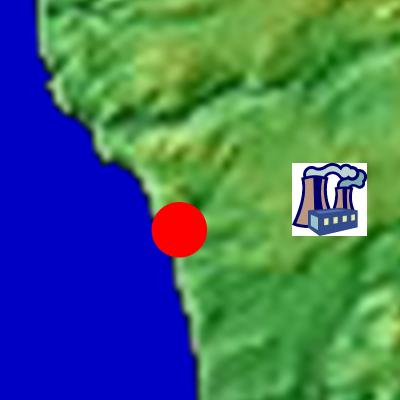 > ACCENT en > Nr 2 June 2005 forest/aerosols > A: Activities
> ACCENT en > Nr 2 June 2005 forest/aerosols > A: Activities
|
ActivitiesEvaporation, condensation, particle and cloud formation |
Go to the following interactive -> QUIZ <- and test your knowledge about water and its role in the atmosphere.
|
|
Put four small petri dishes on a moderately warm heating surface (40-50°C) at the beginning of your lesson. Fill them with 10 ml each of 1) water Observe what happens during the lesson. Can you sort these compounds with respect to their volatility? Please enter in the order of decreasing volatility (Water, Salt, Ethanol, salad oil):
________________________________
________________________________
________________________________
________________________________ At the end of the lesson, if it is not yet evaporated, switch on the heating plate and heat up the petri dish with the salty water. What happens? What can you conclude about salts floating in the atmosphere? Give an answer in 3-4 sentences. |
|
|
|
|
A: Particles in the forest are a source of severe air pollution. It might be a health risk to walk in the forest and we need to find out more about it. B: Particles are important for cloud formation. Since the cloud properties are important for our climate, scientists try to understand how cloud characteristics depend on particle formation. C: Organic particles settle on the forest ground and fertilize other plants. Scientists would like to know more about particles in order to produce better fertilizers for agriculture.
|
|
A group of biologists, specialising in ocean research, built up a measurement site at a nearly unpopulated coastline. They often observed higher values of sulphur dioxide (SO2) during the night and concluded that plants in the ocean release more SO2 at night time. An experienced climatologist saw the results and smiled. He gave them the following hints:
|
|
Explain in 6-8 sentences, why the heat capacity of water is relevant for the local weather factors near the coast and why the location of the measurement point was not well chosen.
|
|



